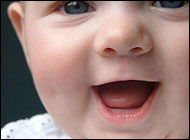Many mothers share bed with baby, a SIDS risk
Nearly half of mothers participating in the Women, Infants and Children (WIC) program are following recommendations on sleeping arrangements for their babies. However, almost one third report sharing a bed with their infant, a known risk factor for sudden infant death syndrome (SIDS), new research published in the Journal of Pediatrics shows.
Noting that the American Academy of Pediatrics recommends having babies sleep in their own crib in the parents’ room, Dr. Linda Y. Fu said, “We would highly recommend that parents follow the recommendations and room share without bed sharing.” Dr. Fu, at the Children’s National Medical Center in Washington, DC, is one of the researchers on the study.
Since 1992, when the AAP first stated that infants should be placed on their backs to sleep, the occurrence of SIDS has fallen by half, Fu and her colleagues note in their report. However, rates have plateaued over the past five years, raising concerns about other SIDS risk factors, including bed-sharing, the researchers add.
The AAP recommended in 2005 that babies from birth to age one sleep in the same room as their parents, to make it easier for mothers and fathers to monitor the child, but should not share a bed.
To investigate factors involved in how parents choose a sleeping place for their infants, the researchers looked at 708 mothers of babies up to eight months old who were getting nutritional assistance from WIC, a federal program to help low-income families.
The researchers found that 48.6 percent of mothers reported sharing a room, but not a bed, with their infants; 32.5 percent shared a bed with their child; and 18.9 percent had the baby sleep in his or her own room.
 Teenage mothers were more likely to bed-share, as were less educated mothers. African-American mothers also bed-shared more frequently than women from other ethnicities. Both African-American ethnicity and teen motherhood are in themselves SIDS risk factors, the authors note, “likely rendering infants with these characteristics at high risk for SIDS.”
Teenage mothers were more likely to bed-share, as were less educated mothers. African-American mothers also bed-shared more frequently than women from other ethnicities. Both African-American ethnicity and teen motherhood are in themselves SIDS risk factors, the authors note, “likely rendering infants with these characteristics at high risk for SIDS.”
The reason why bed-sharing is related to SIDS isn’t yet clear, Fu noted. “It may not be bed sharing itself but some of the accompanying factors when people bed-share,” she told Reuters Health, for example sleeping on soft surfaces or using multiple blankets.
Some families may not have the resources to buy a crib or bassinet for their babies, Fu and her team noted, and several cities, including Washington, DC, now run free crib distribution programs to help these families.
SOURCE: Journal of Pediatrics, October 2008.